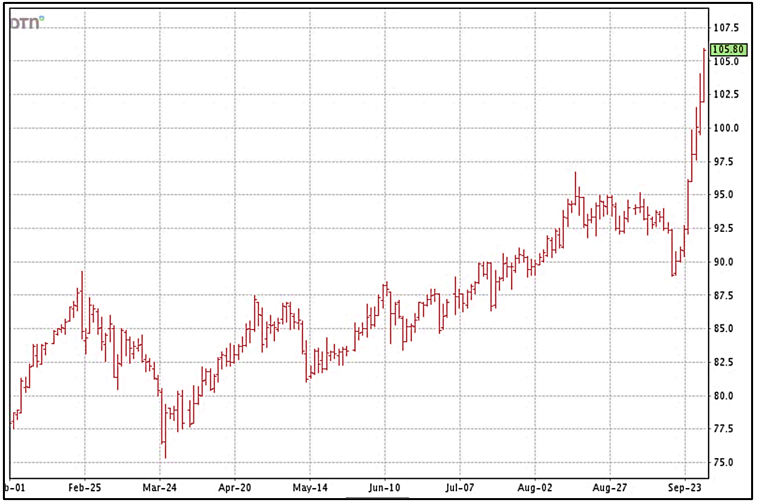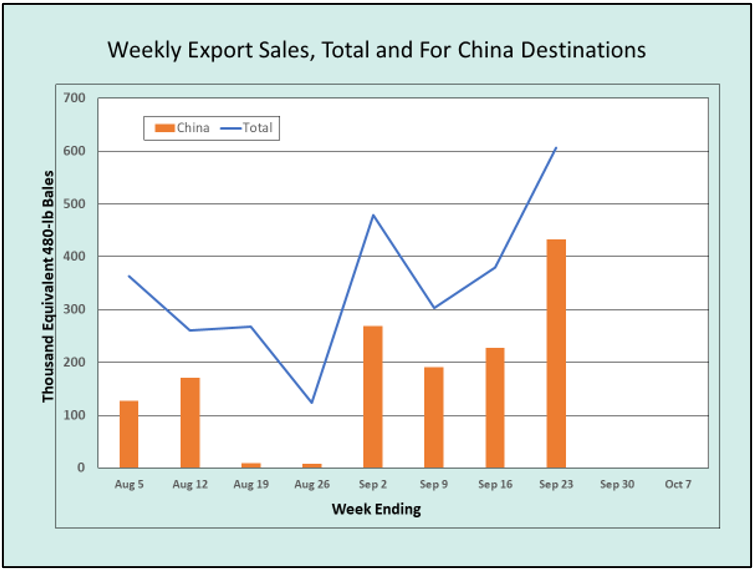Don Shurley, UGA Professor Emeritus of Cotton Economics
Looking back 6 months, the move to 80-85 was the first pricing action for some growers. It was considered a good price risk management opportunity. Then prices (December futures) moved further to 90 cents. This was also considered a good opportunity and prompted some growers to add to earlier sales or, for some, to jump in for the first time. When December futures hit 90 then 95, talk of $1.00 cotton really started to circulate. Some growers added more to sales; others decided to hold off and see. I imagine there are some growers who, to this day, have done only a little or even nothing in the way of pricing.
–
My thinking is that most growers have done at least some fair to moderate amount of pricing on their expected production. As is usual, pre-harvest price fixing is tempered by the uncertainties of not yet knowing what crop you truly have.
To try in any way to explain what might be going on, I’m reminded of the basic principle that buying activity (of any type) will tend to pull prices up. Selling (of any type) will tend to push prices down. We should also note that this rapid run to $1.00 or more was preceded by a drop from 95 to 90. That decline could have triggered interest in buying starting at that level.
In terms of economic fundamentals impacting the market, exports have been very good including large sales to China destinations. This has provided continued strong optimism for demand/use and support/fuel for prices. Today’s export report (for the week ending Sept 23rd) showed huge sales of 606,000 bales (USDA statistical equivalent bales)—89% above the average for the prior 4 weeks. Sales to China were 433,000 bales. Shipments were 181,000 bales—8% below the average for the previous 4 weeks.–
–
USDA will release its October supply/demand estimates on October 12th. We’re likely to see increases in both World Use and US exports. There are crop concerns in some Texas areas (from recent rains that could delay harvest and reduce grade), and in India and China. The recent surge in export buying for China could be evidence of a reduced crop. With continued strong demand, less supply can be a recipe for continued good prices.
–
If you will have unsold production, price is already over $1.00. What do you do? Typically, you might store or sell on-call and price later. But the market is “inverted”—for example, May 2022 futures is currently 2.85 cents less than Dec 2021. This doesn’t necessarily mean storing won’t work- but you’ll have to overcome the big invert plus hope for even further price increase. An alternative would be to sell the cotton and, if you’re willing to risk the market is going to continue up, buy Calls.
Some growers might want to price (add to sales) but are unsure of production and don’t want to overcommit. To protect from prices possibly moving lower, growers could purchase Puts. If prices continue to increase, the Put will lose value but the cotton will gain in value. Much of the strength in prices recently is thought to be due to speculative buying. This can create a volatile and uncertain situation.
–
- Where Did That Weed Come From? The Importance of Weed Management Practices and Timings - December 5, 2025
- Sustainable U.S. Peanuts Kicks Off 2025 Crop Enrollment - December 5, 2025
- Grant Opportunity Available to Attend American Forage & Grassland Council Conference, Ashville – January 12-15 - December 5, 2025




